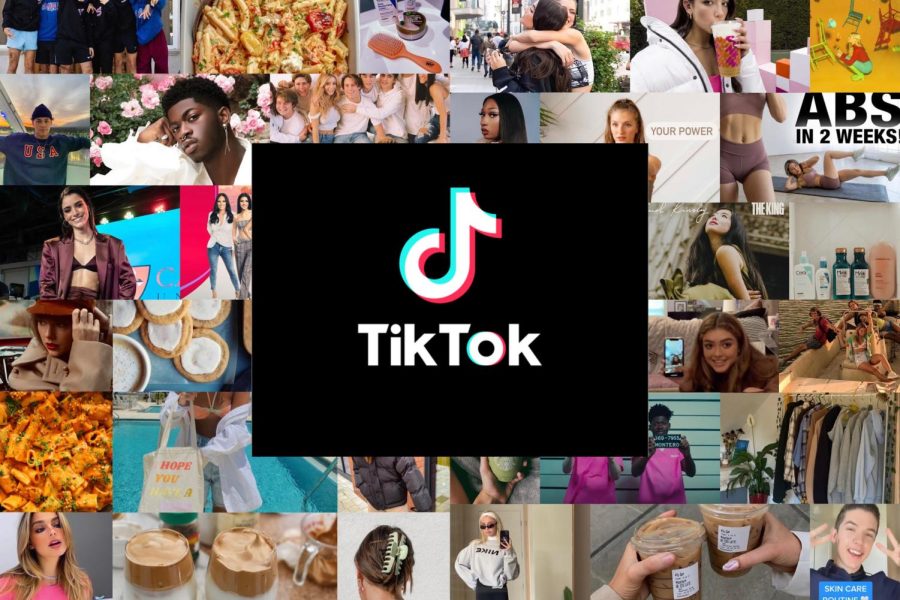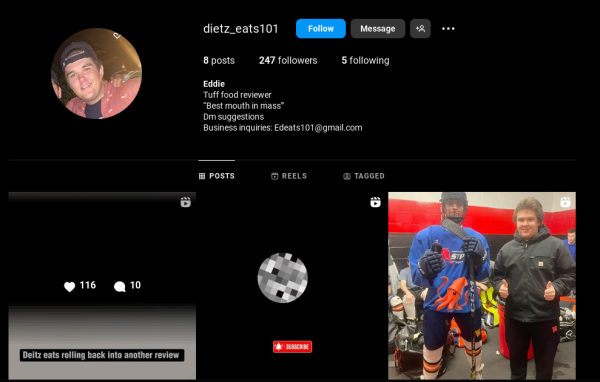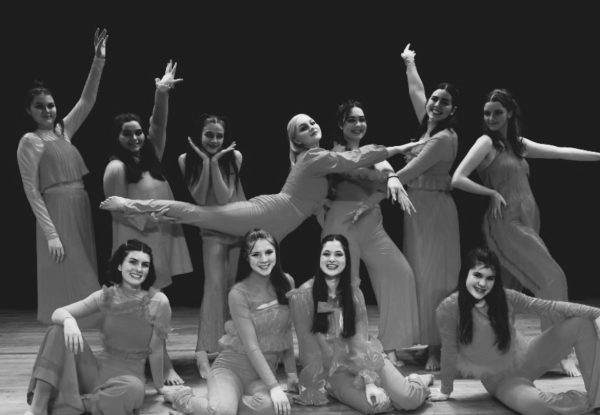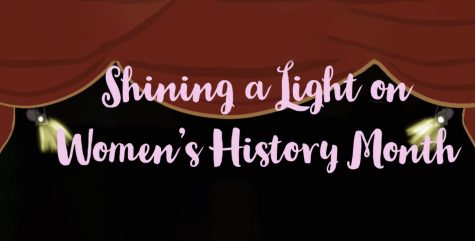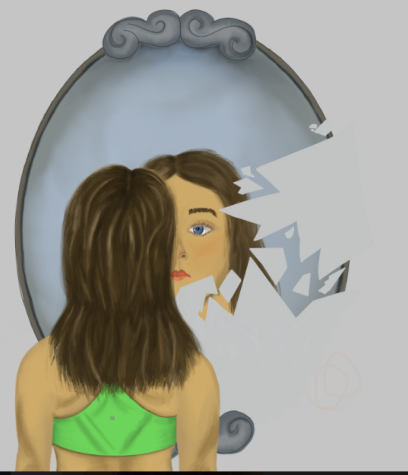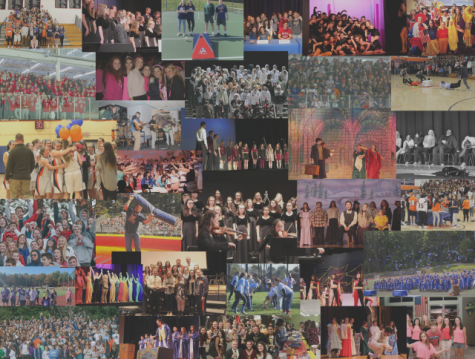TikTok Is the Major Catalyst for Gen-Z Trends in 2021
Since its launch in 2016, TikTok has had a greater influence over modern culture than any social media platform before. Much of the app’s popularity has come with the COVID-19 pandemic. With millions of people trapped inside, this app offered the perfect solution. Its “For You Page” (FYP) provided an endless stream of content catered to each individual user. With thousands of creators producing content daily and hours to spare, it was difficult not to become addicted to the app. The pandemic helped boost TikTok to become the third fastest growing brand of 2020.
In the five years since its release, TikTok has been downloaded two billion times and over 130 million times in the United States alone. With such a broad audience, the app has allowed music, television, food and fashion to trend across the world. TikTok has united viewers of all different backgrounds under one common bond.
Almost every video on the FYP has background music, leading to many small artists gaining fame and popularity. Artist Doja Cat rose to fame with songs like “Say So,” “Like That” and “Juicy.” “Say So” gained popularity months after its release in November of 2019, after user Haley Sharpe created a viral dance to the sound. Since then, the song has been nominated for two Grammy awards, and earned a remix with Nicki Minaj. Additionally, Doja Cat was named Rolling Stone’s top breakthrough artist of 2020. “Say So” reached the top ten charts in many countries, including Canada, Australia, Portugal, France, Ireland and Mexico.
Most of Doja Cat’s chart-topping tracks originated from viral trends. However, she was just one of many new artists who found their fame on the app. Between smaller artists like Ashe and Sarah Kinsley and bigger stars like Megan Thee Stallion, Lil Nas X and Olivia Rodrigo, TikTok songs have dominated the music industry. At WHS, 70% of students reported that TikTok has inspired the songs they listen to.
“I think TikTok has a positive influence on music. I have found some of my favorite songs and artists on the app. TikTok songs are also all over the radio, so it’s hard to ignore the trends,” an anonymous WHS student said.
Like any other social media platform TikTok has its influencers. However, the most followed person on the app, Charli D’Amelio, has perhaps gained more popularity than any social media star before. The creator has accumulated over 130 million followers throughout her two years on the app. D’Amelio primarily posts dance videos, yet has become so famous that she has partnered with Dunkin’ Donuts to create her own drink, called “The Charli.” The influencer has even won awards for her social media presence, including a Streamy Award, a Kids’ Choice Award and nominations for both MTV Awards and a People’s Choice Award.
D’Amelio’s fame has extended to her entire family; her parents both have about 10 million followers on TikTok and her sister Dixie has 56 million. Dixie D’Amelio used TikTok to promote her music career, creating hit songs like “Be Happy,” “One Whole Day” and “Roommates.” She has also worked with other famous artists, including Liam Payne, Wiz Khalifa and Rubi Rose. The family has a joint TikTok account with 15 million followers and a YouTube account with over 1.6 million subscribers. The family also created their own reality TV show called “The D’Amelio Show”, which was recently renewed for a second season on Hulu.
The D’Amelio family is a perfect example of how influential the app is; an ordinary teenage girl essentially became a global celebrity overnight. Even smaller trends have become sensations due to TikTok’s influence. TikTok’s FYP allows certain videos to reach a massive base, compared to sites like Twitter and Instagram, which only provides users with posts from accounts they follow. This unique format boosts trends and products to popularity throughout different countries and demographics. At WHS, 88% of students claim that their daily lives are influenced by TikTok.
“Since I downloaded TikTok I have completely changed my skin care and workout routines,” an anonymous WHS student said. “TikTok has shown me a lot of cool new products that I wouldn’t have found otherwise.”
After user “SkincareByHyram” began reacting to skincare routines and products on his account, he amassed almost seven million followers. This influence popularized certain skincare items and tips, particularly the brand CeraVe. Despite being a traditional drugstore brand, CeraVe products were sold-out at nearly every store following its boost in popularity.
This phenomenon is not exclusive to CeraVe, however. In January of 2021, user MacKenzie Smith posted her rendition of the Finnish recipe “uunifetapasta” (meaning “oven-baked feta pasta”) on TikTok. The video quickly went viral, gaining millions of views. Similarly to CeraVe, feta cheese, the dish’s main ingredient, sold out at grocery stores across the world.
TikTok’s influence is undeniable; the app has had the fastest growth out of any social media platforms and continues to maintain a massive hold on its users. However, this popularity has led many users to question how much influence is too much influence. On one hand, TikTok acts as a fun source of entertainment that can serve as a creative outlet for many.
“I think [TikTok’s influence] is pretty positive since most of the things I take away from it seem to help me in my daily life. Whether it be physical help like finding new skincare products that work for me, or mental help like hearing a motivational video that helps me better myself,” anonymous WHS student said.
On the other hand, not every trend can be as positive as a fun recipe or a new skincare routine. Recent viral trend known as the “Devious Lick” challenge is proof of that. The challenge originated after user “jugg4elias” posted a video of him stealing a box of disposable masks from his school, calling it a “devious lick.” However, this quickly escalated, leading many users to vandalize their schools and steal things such as microscopes, ceiling tiles and even Smart Boards.
Trends like this one raise concern for many about the amount of power TikTok holds over users, particularly teens. At WHS, 75% of students said they would be willing and likely to try a trend or life hack that they saw on the app. While many trends are harmless, “Devious Licks” is a perfect example of how an innocent post can escalate too far.
Ultimately, TikTok’s influence has only continued to grow, and it does not seem like it is going anywhere. Whether it is selling out grocery stores, boosting ordinary people to stardom or encouraging vandalism, the app has a greater hold on the general population than any social media app has before. Nearly every new trend within the last two years has stemmed from the app. Whether this be good or bad, TikTok’s power is something to watch out for.

Katie Gillis, class of 2022, is co-Editor-in-Chief of The Searchlight. At Walpole High School, she captains the indoor and outdoor track teams and is participates...

Cate Stanton, class of 2022, is co-Editor-in-Chief of The Searchlight. At Walpole High School she is co-President of the French Club, a member of the National...



